Numbers vs Excel vs Rows: Which One is Better in 2025?

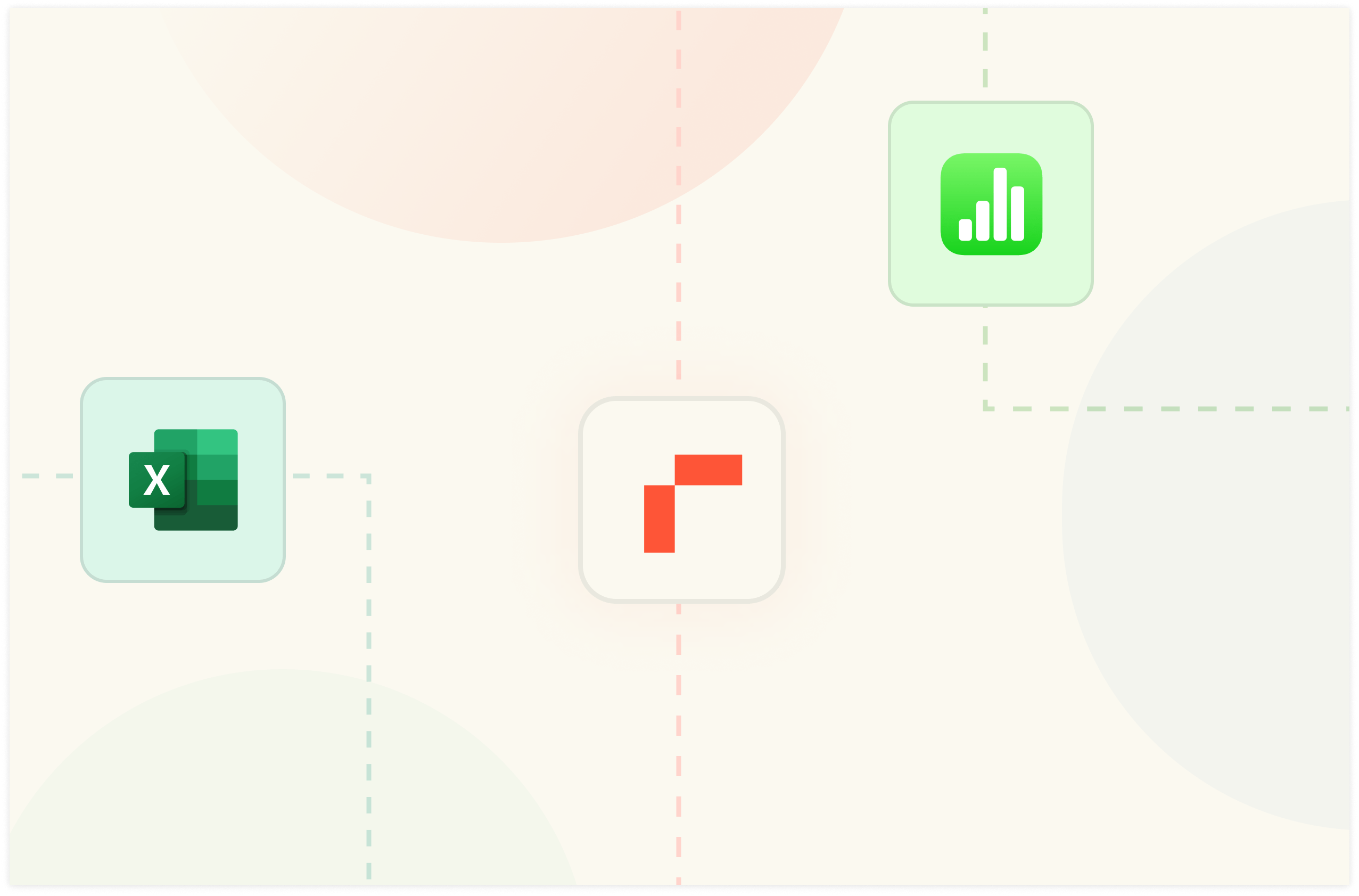
I know it’s tough to find a spreadsheet software that accounts for all your data analysis and visualization needs.
With the never-ending number of spreadsheet software options in the market, it’s normal to feel overwhelmed and end up using the wrong software.
To save you time and money, I have identified the three best spreadsheet software in the market.
Numbers, Excel, and Rows.
In this article, I will compare Numbers vs Excel vs Rows based on their features, integrations, and pricing.
But first, here’s a TL;DR to save you time:
Numbers: If you need a spreadsheet software that works and integrates flawlessly with the Apple ecosystem and can do basic data analysis and visualization, Numbers is a good choice.
Excel: If you need to manipulate and run in-depth analysis of large datasets, then Excel is the right choice for you. The software also gives you access to the biggest catalog of functions and formulas.
Rows: If you often paste data or import files from many of your daily tools to a spreadsheet to analyze and share, your go-to software is Rows. It comes with 50+ built-in data integrations, AI capabilities, and beautiful sharing options.
For an in-depth comparison, read ahead.

The spreadsheet for modern teams
Save hours on data import, surface insights by asking, and share beautiful, ready-to-use dashboards.
Get Started (free)Features - Numbers vs Excel vs Rows
Rows Features
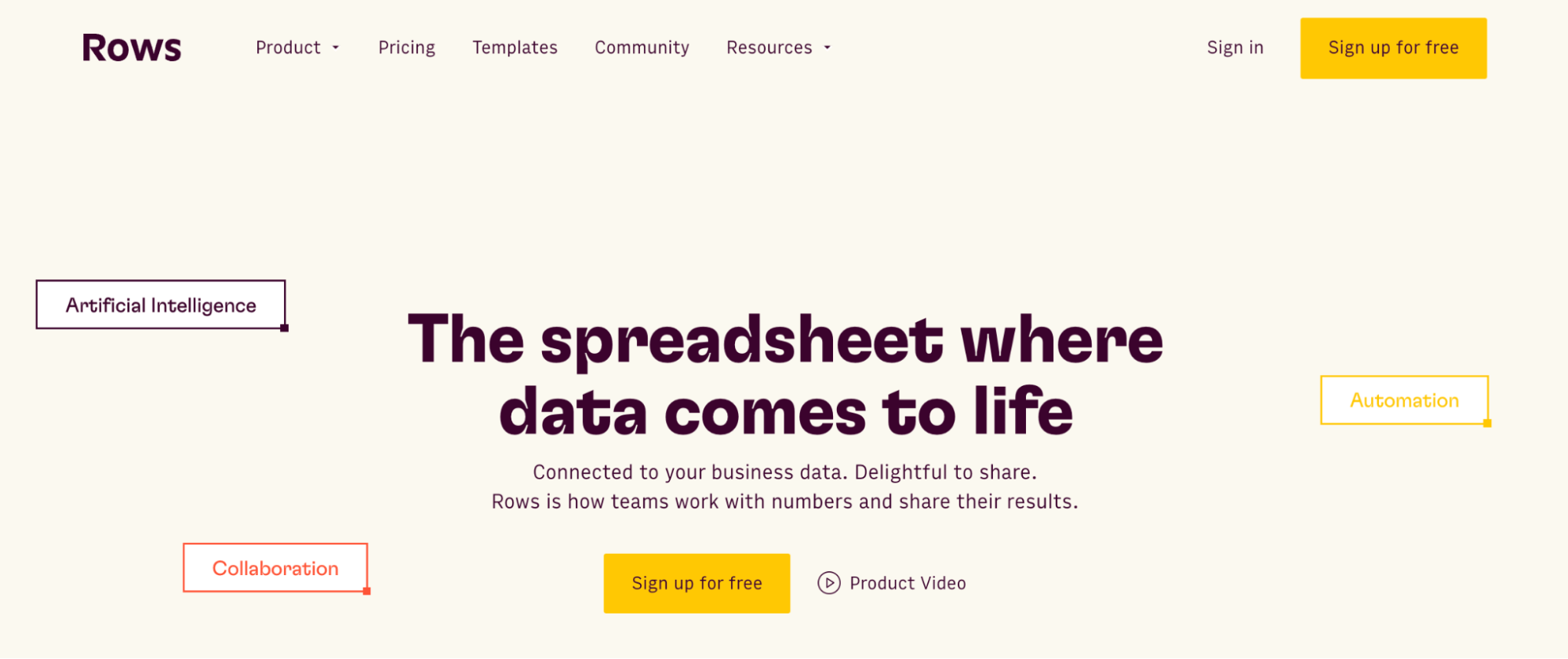
Rows gives you extra flexibility when importing, transforming, and visualizing data. It’s a spreadsheet software with modern AI capabilities, access to more than 50 integrations, and stunning data visualization features.
Let’s look at some of the features it offers:
Feature 1. Data Integration
Rows integrates with 50+ software that helps you import and export live data into or from spreadsheets.
The best part about these integrations is that all of these are built-in native features. You don’t need an external add-on to use AI in your analysis.
Curious about how Rows pulls this off?
It handles JSONs in the grid and converts them into table format.
The feature comes in handy and saves you time.
Some examples of data integration in Rows are:
Import Google Analytics 4 data to Rows and get key analytics and reporting. Pick one of the recommended reports or build your own custom view as follows:
Or you can:
Connect your LinkedIn page and track comments to your posts.
Connect Slack to Rows and set alert automation to your #social channel whenever a new comment appears on your social media posts. All from a spreadsheet.
Import a Notion database in Rows with a few clicks, enrich data, and send it back to Notion.
The HTTP source sends GET, POST, PUT, and PATCH requests to any endpoint using basic or API token authentication methods. This helps you retrieve data from tools that aren’t in the Rows catalog.
💡 Try it yourself real time with the following HTTP tester:
Feature 2. Inbuilt AI to Solve Complex Problems
Rows has inbuilt AI capabilities that makes data analysis easy even for non-data-friendly users. The software lets you explain what you want to calculate in plain, simple English rather than formulas.
There are three main AI components you get to use with Rows:
1. AI Functions
Rows comes with 14 proprietary AI functions that automate prompts and address specific types of tasks.
One such function is – EXTRACT_OPENAI, which helps you extract a concept or a portion from any text. Watch the interactive demo below:
Similarly, you can also execute sentiment analysis on a social media comment or product review using the function – SENTIMENT_ANALYSIS_OPENAI or clean up data using APPLY_TASK_OPENAI.
💡Try it yourself in real-time with our Sentiment Analysis tool.
Discover more about all possible use cases of AI in Rows.
2. AI Analyst
With the AI Analyst, you can ask AI to analyze, summarize, transform, and enrich your analysis. Click on the "AI Analyst“ ✨ icon, at the top right corner of any table.
A chat interface will open on the right: you can ask a broad range of questions, from basic spreadsheet commands - plotting a chart or adding or formatting columns - to more complex tasks, such as slicing, pivoting, or computing metrics about your data.
For example, given a dataset with daily revenue and costs of various marketing campaigns, you can ask the Analyst to add a column with the profit margin. Watch the video below:
In addition, our AI Analyst is instructed to use our native OpenAI functions to perform data enrichment or extraction tasks.
For example, you can ask the AI analyst to run a sentiment analysis on a column with product reviews, or add a column that categorizes addresses into regions, see below:
Want to know more about how our Analyst works? Check out our guide or watch our demo.
3. AI Subtitles
Ask AI to generate subtitles for your tables and graphs that include key insights from the data displayed.
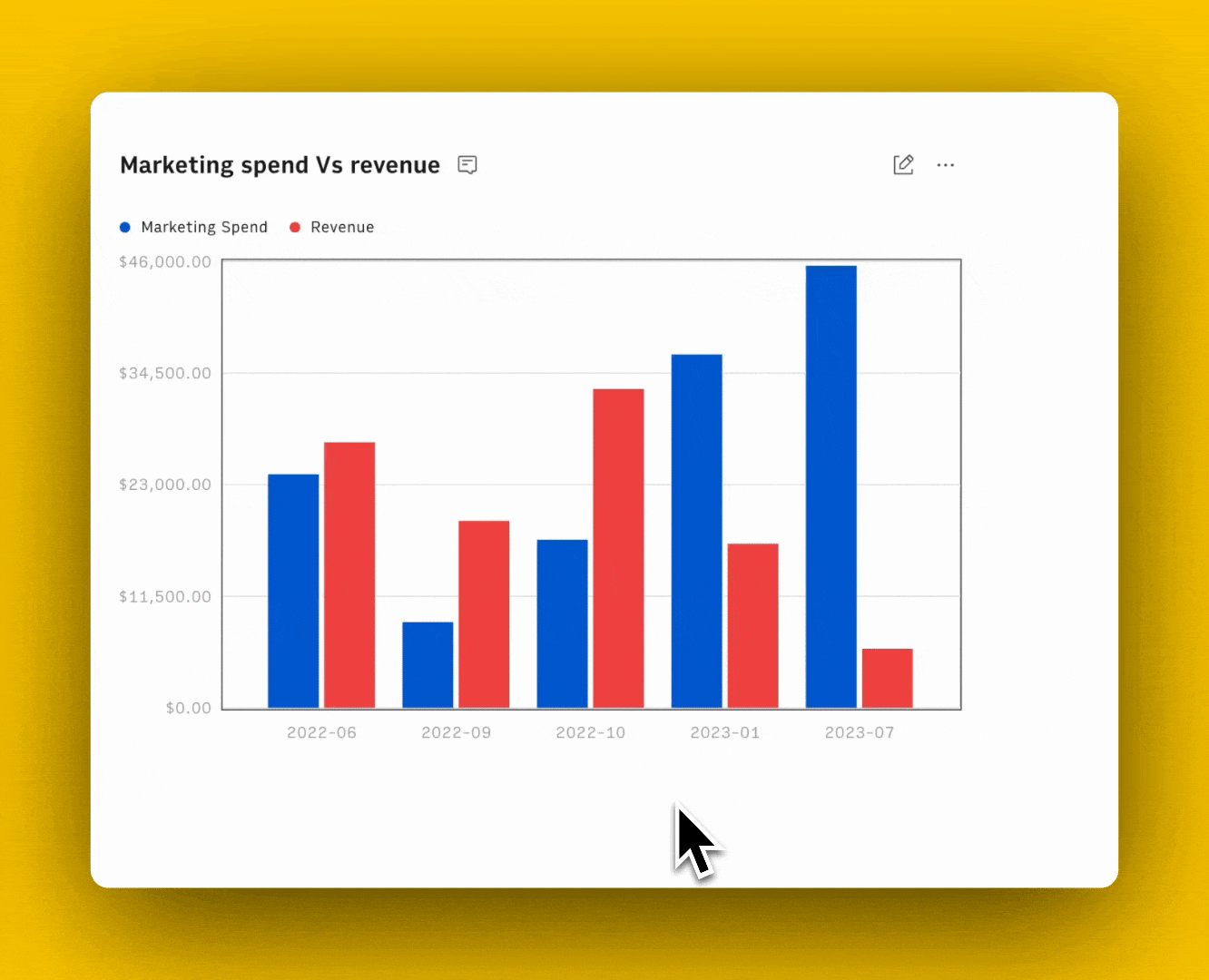
Feature 3. Embed Tidy Tables and Charts
Rows layout lets you create dashboards that bridge the gap with modern data visualization tools but with the ease and flexibility of a spreadsheet.
The example below shows the template of our KPIs dashboard that we are currently using with Rows investors (but with dummy data):
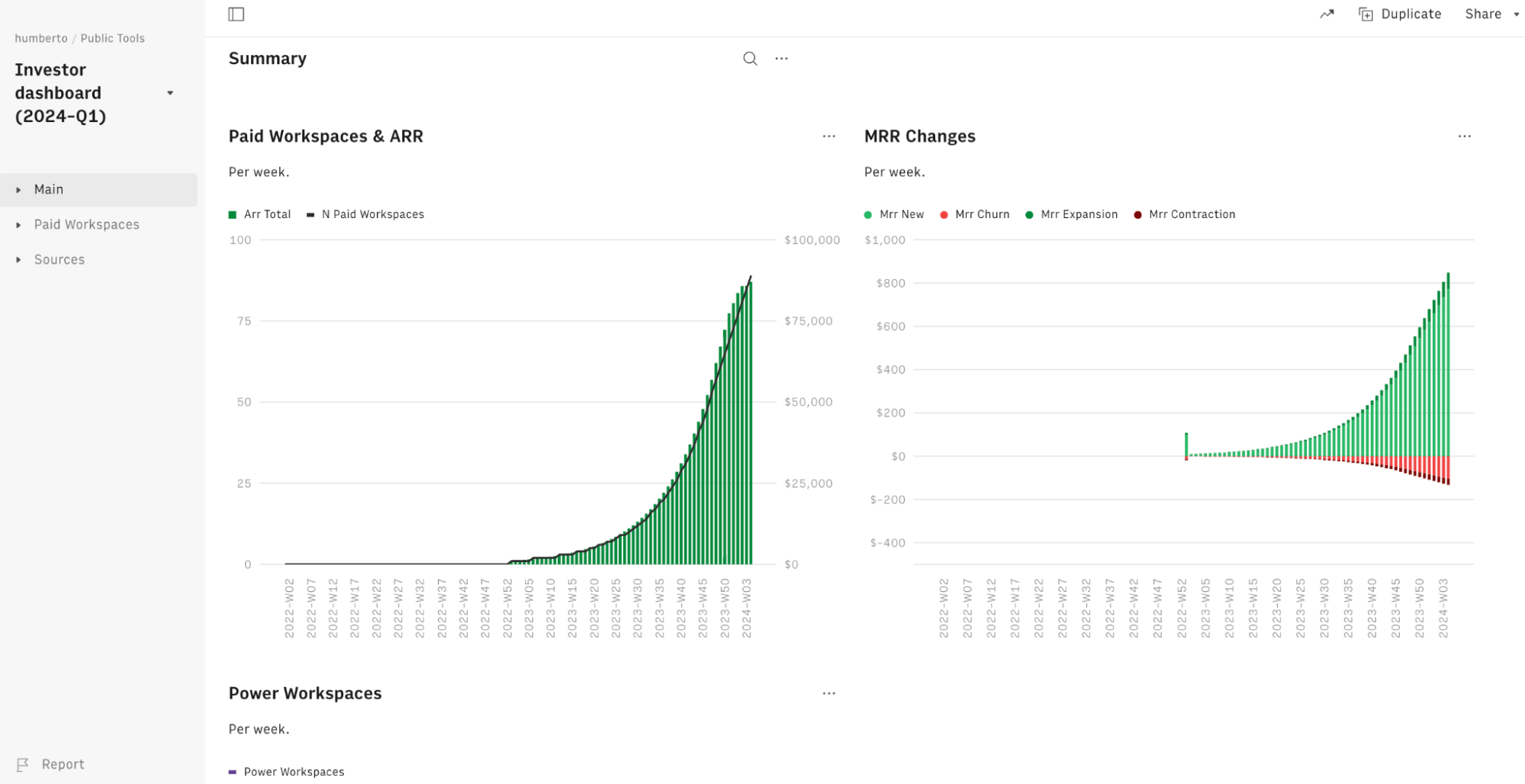
Apart from this, you can also embed tables and charts beautifully on Notion, Confluence, website, wiki, or other internal tools that support iframes with ease.
It’s a simple 4 step process:
Choose Embed from the Settings menu that you see on the right-hand corner of the element you want to embed.
Switch the Share Privately toggle on.
Click <> Copy code. Use the Copy link to paste directly into tools that automatically embed via the link - e.g., Notion.
Paste the embed code on your website, wiki, or destination tool.
Here’s an interactive demo to understand better:
Learn how to use Embed in the most recent documentation tools, like Notion, Confluence, and Slite.

The spreadsheet for modern teams
Save hours on data import, surface insights by asking, and share beautiful, ready-to-use dashboards.
Get Started (free)Excel Features
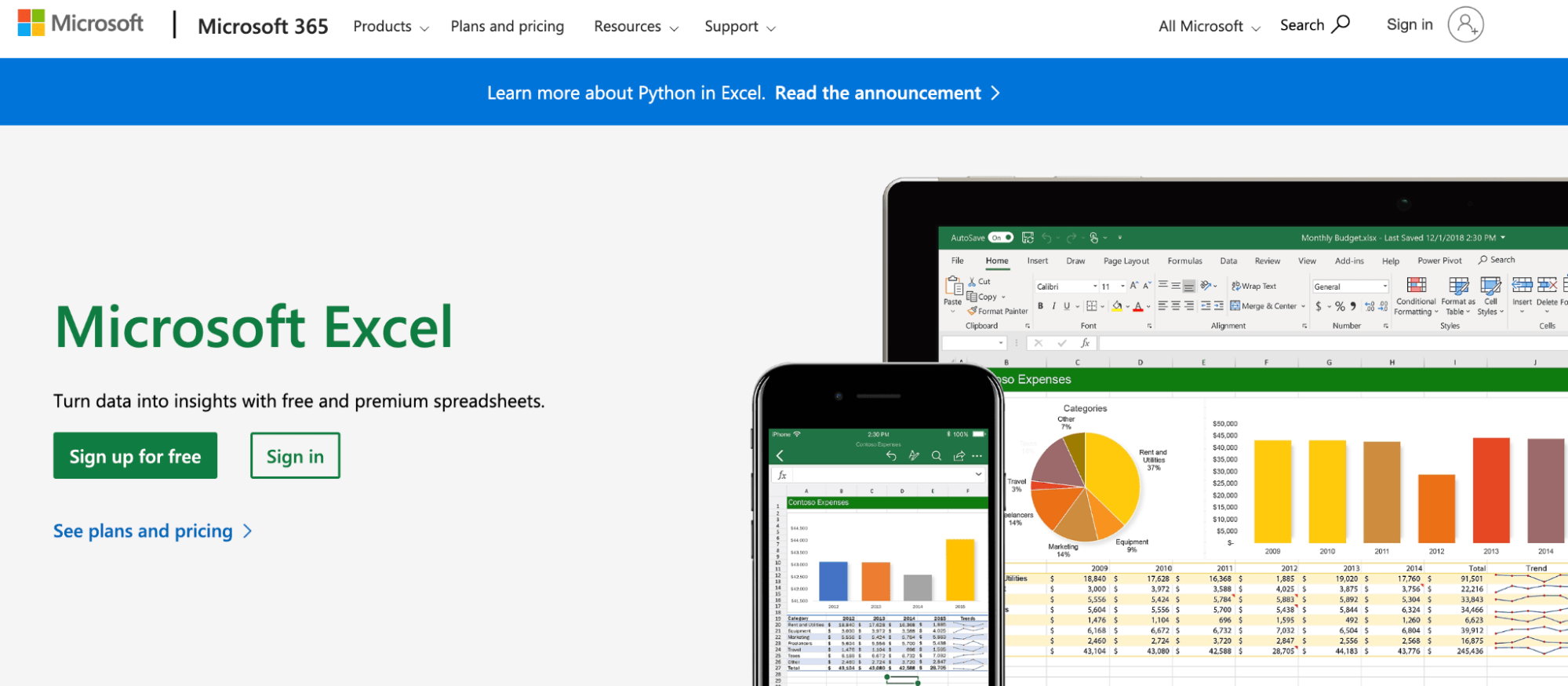
Excel is the industry standard application for working with numbers. It’s flexible, powerful, and capable of handling large datasets and complex analyses.
Here are some of its core features:
AI and Automation
Excel’s AI Copilot is a conversational AI assistant that lets you perform tasks using natural language commands. It assists with data formatting, organizing, and carrying out advanced tasks like identifying trends, proposing scenarios, and building dashboards.
Unlike Rows, which offers AI capabilities without additional costs, Excel’s Copilot is an add-on that requires an extra fee to use within the application.
Excel features Macros to automate spreadsheet processes.
Macros are bite-size recordings of specific steps or processes. Once recorded, you can activate a macro to perform any tasks automatically.
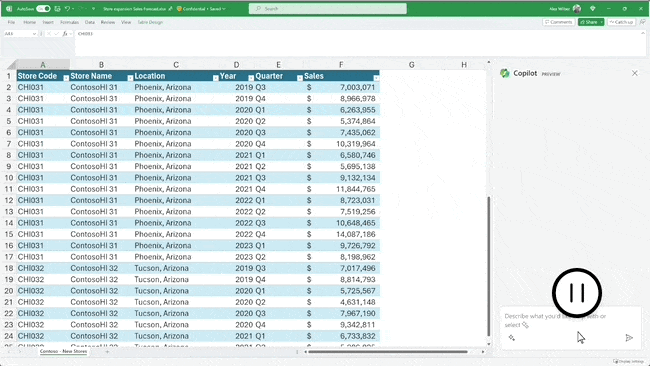
Formulas and Functions
Hands down, Excel is a more powerful data analyzer than Rows and Numbers. While both tools are good with small data sets, Excel wins at enterprise-level data handling.
In Rows vs Excel vs Numbers, Excel has the most extensive catalog of formulas and functions (500+). This makes tasks like accounting and statistical analysis easy; much of the reason why Excel is still the behemoth of the spreadsheet industry.
Meanwhile, Excel also includes advanced statistical tests such as z-tests, t-tests, and ANOVAs. At the moment, these are unavailable in the other two tools.
Data Visualization
Excel offers customizable graphics and data visualization elements like bars, charts, area and scatter graphs, and other templated options. It also has a Quick Analysis tool that automatically selects the best chart for your data.
In addition, you’ve access to an extensive gallery of ready-made dashboard and report templates for inventory, budgeting, and other versatile purposes. Rows and Numbers also have templates, but they are limited in use cases.
The key differentiator here between Rows vs Excel vs Numbers is that Excel has advanced plotting and charting features, preferable for complex data visualization tasks. Rows stand next to Excel, while Numbers is the ideal choice for small-data presentations.
Optical Character Recognition (OCR)
Excel’s OCR tech lets you capture and convert printed or hand-drawn data tables into an editable spreadsheet with a click. The tech comes in handy when you need help getting rid of paper or physical datasheets.
Numbers Features
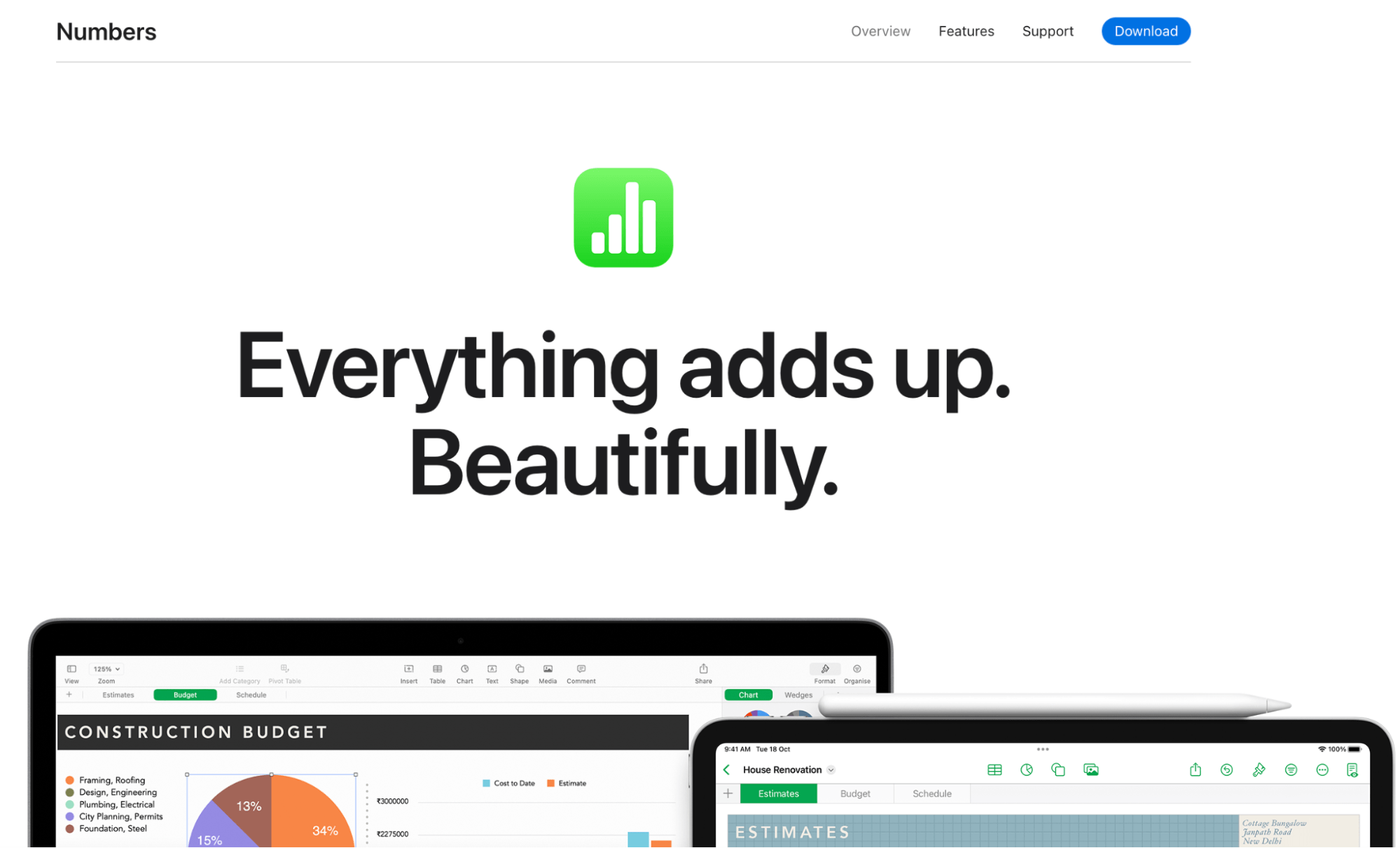
Numbers is a spreadsheet app developed by Apple as part of the iWork productivity suite. It’s available for iOS and macOS High Sierra or newer versions.
Here are some of the features that make it an Excel and Rows competition:
Flexible Interface
Numbers has a customizable interface. The spreadsheet is actually placed on a giant canvas as tables. It has a gallery of different table layouts and styles. You can add multiple tables, adjust size, and add more rows or columns – all within the canvas.
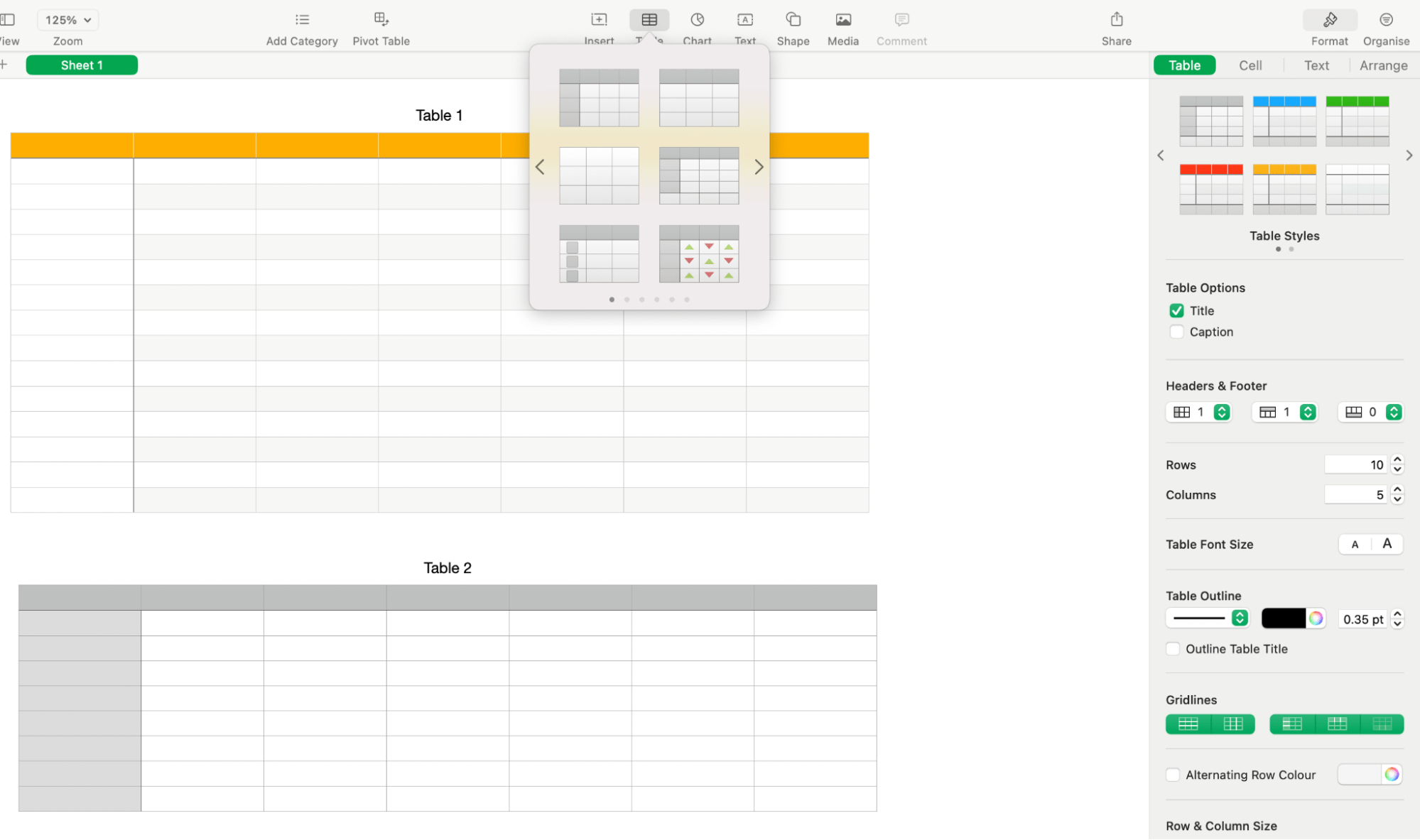
Powerful Functions
Standing next to Excel’s 500 mark, Numbers supports 250+ functions to perform complex calculations, create formulas, and filter or sum up data.
The autocomplete suggestions appear as you start typing a formula. Plus, you get a miniature-sized help box describing the formula used with examples.
Use pivot tables and smart categories to quickly organize and summarize tables for a deeper understanding of the story behind your data.
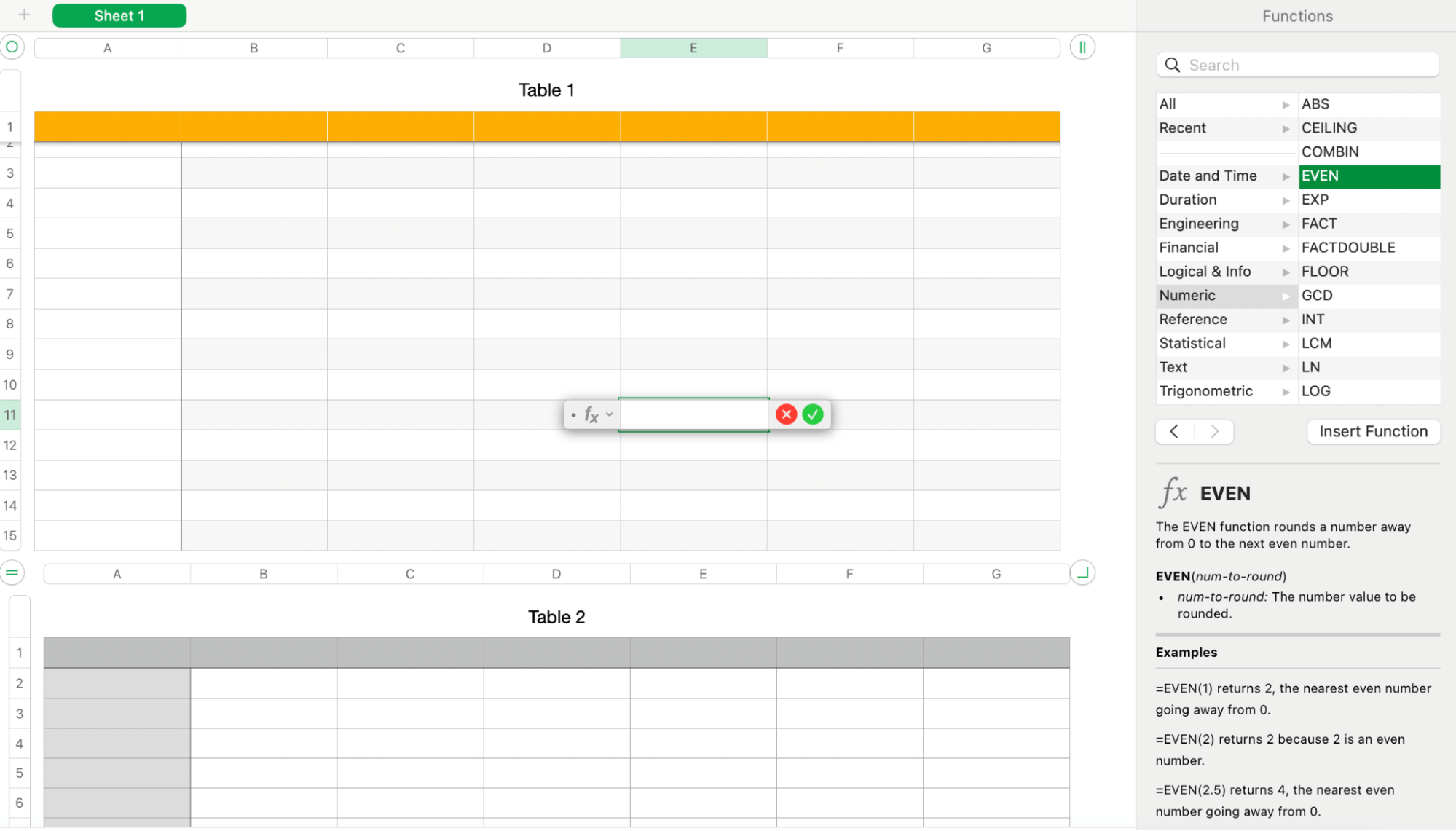
Real-Time Collaboration
Numbers lets you edit a spreadsheet with co-editors simultaneously. Unlike Excel, you get notified when people join, edit, or comment in collaborative spreadsheets. Use Apple Message and FaceTime for advanced collaboration needs on spreadsheets.
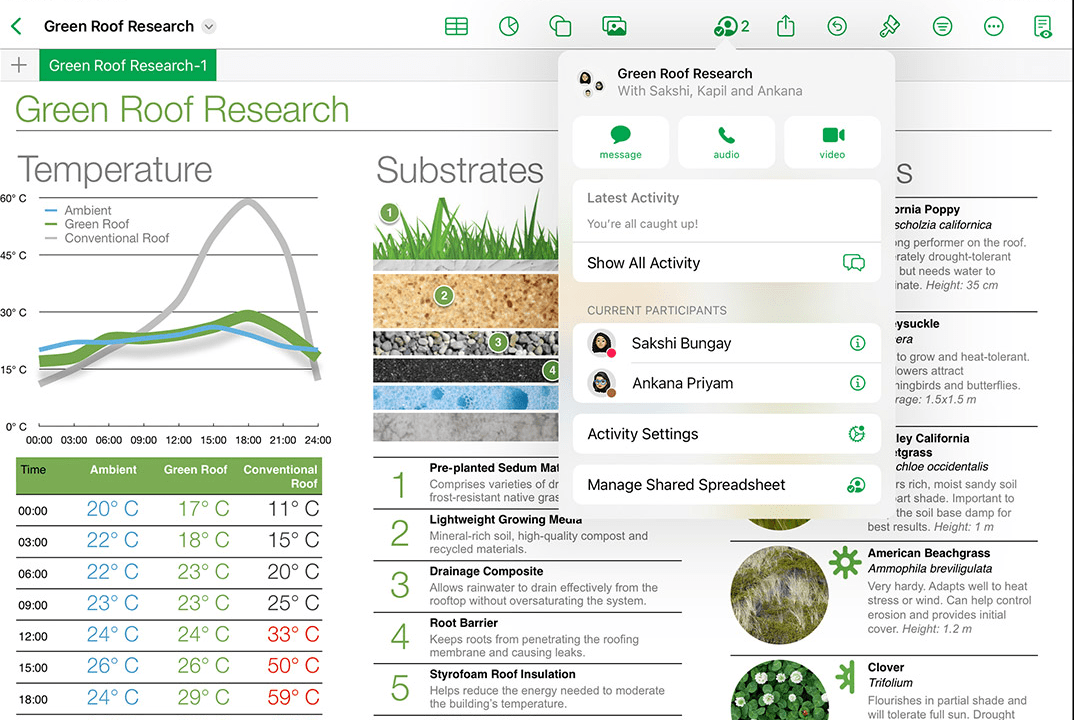
However, being an app, Apple’s Numbers software has version issues that can cause compatibility problems between different versions of the app.
Data Visualization
Numbers offers a variety of chart options, including bar and column charts with clearly labeled numbers and adjustable sizes, insightful radar and doughnut charts, interactive graphs, and over 700 customizable shapes.
It also has a template library with daily-use templates for personal finance, business, and educational use cases.
However, compared to Rows and Excel’s robust visualization abilities, Numbers provides limited elements for data visualization that are more accurate for visualizing bite-sized data sets.
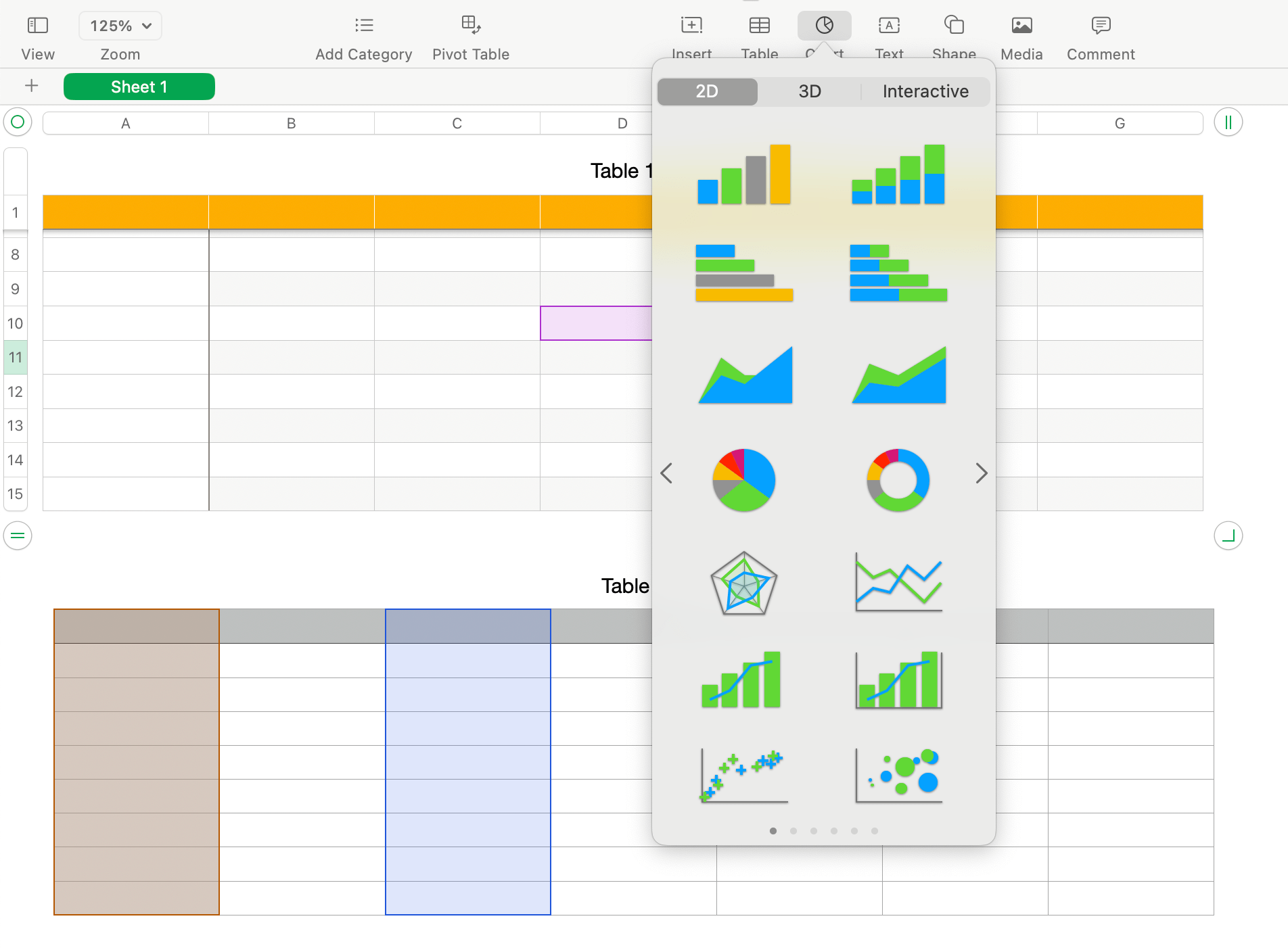
Which Spreadsheet Tool Has Better Features?
All three tools excel in different aspects:
If you want to leverage advanced AI and visualization capabilities, use Rows.
If you want a large array of functions and formulas to carry out the calculation process, Excel should be your best choice.
If you need a spreadsheet software to collaborate with other Apple ecosystem editors, use Numbers.
Integrations - Numbers vs Excel vs Rows
Rows Integration
Rows integrates with more than 50 data sources, helping you import, automate, and visualize data more effectively.
It integrates with software in categories such as finance, marketing, databases, AI, CRMs, and more, such as Google Analytics, Google Search Console, Facebook Ads, Notion, and BigQuery.
If the tool you are using is not in Rows catalog, you can always execute custom API requests to any endpoint with proprietary HTTP functions.
Rows also integrates with Open AI to use AI when analyzing data, making the whole process easy for the users.
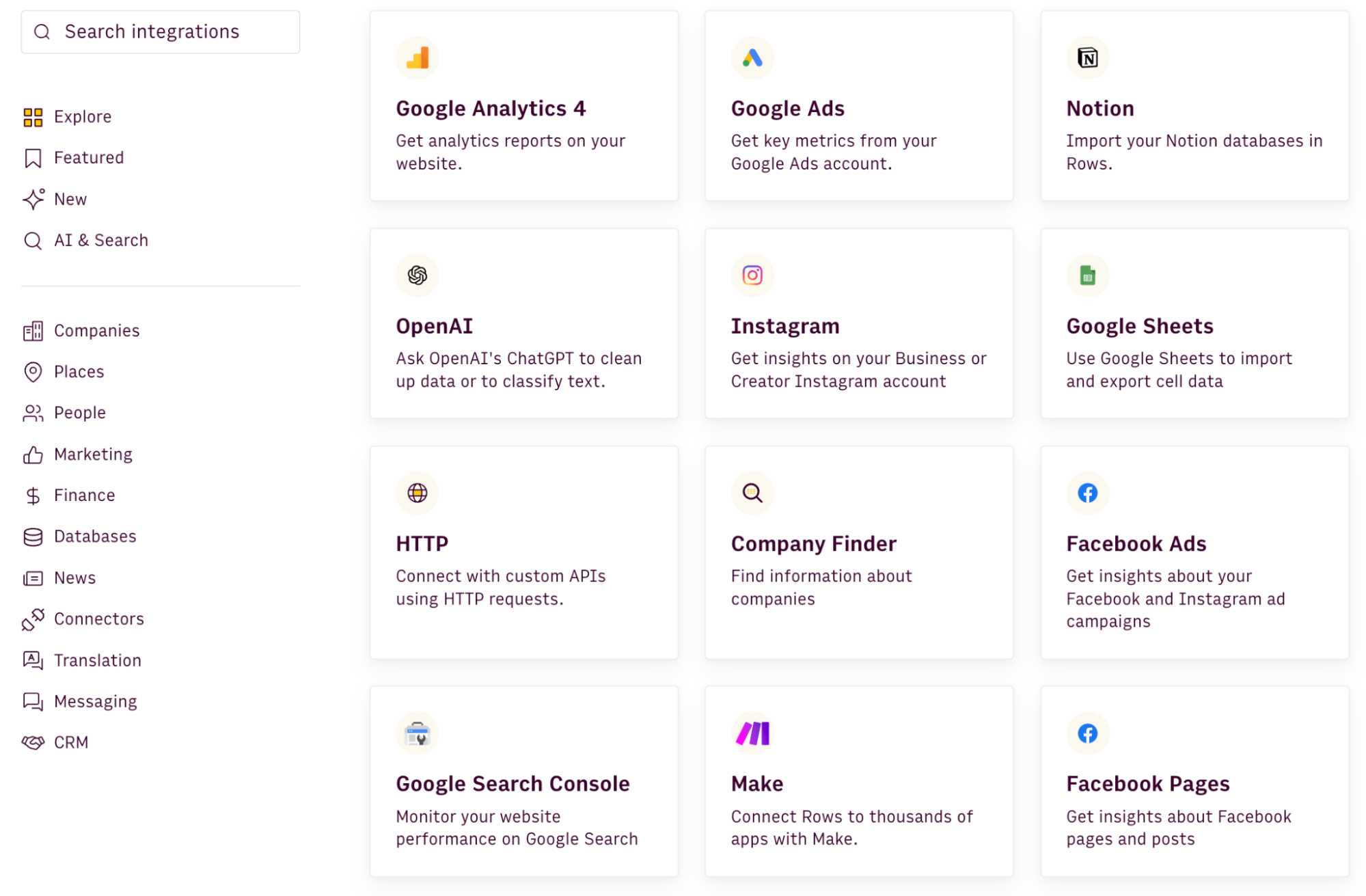
Excel Integration
Excel misses modern, plug-and-play data integrations – most of which you’d find in Rows and none in Numbers.
Excel’s native integrations are limited to Power BI and a few data warehouses. However, its Zapier integration allows you to integrate with 5,000+ third-party apps in a click.
Numbers Integration
Numbers integrate with Apple productivity tools, such as Pages and Keynote, providing a cohesive workflow experience across multiple platforms.
On top of that, you can save Numbers spreadsheets as Excel files or import and edit them right in the app.
Which Spreadsheet Tool Has Better Integration?
When it comes to integrations, Rows has the best native integrations out of the three. It covers tools in almost all major categories – Marketing, Finance, AI, Data warehousing, and more.
Pricing - Numbers vs Excel vs Rows
Rows Pricing
Rows comes with a free forever plan that lets you:
Onboard unlimited team members
Add up to 10 guests
Create unlimited spreadsheets
Execute 50 integration tasks per month
The free plan is quite generous. But if you want to use data integrations at scale, want white-labeled embed, video support, and more, you have the option to upgrade to one of the paid plans Rows offers:
Plus: $15/month/member, up to 25 guests, unlimited integration tasks & daily data refresh.
Pro: $22/month/member, up to 100 guests, unlimited integration tasks & hourly data refresh.
Enterprise: Custom price for advanced API usage and workflows.
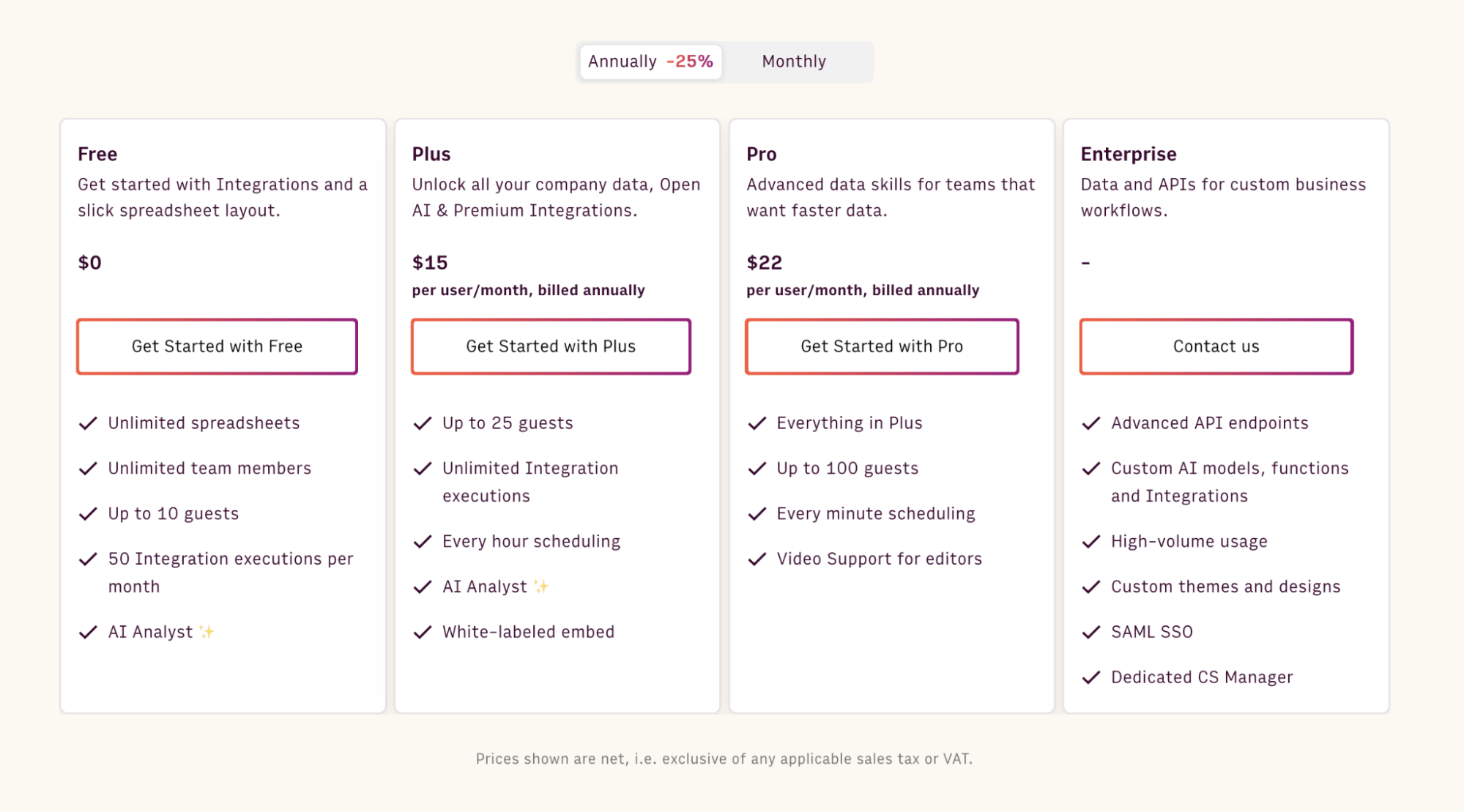
Excel Pricing
Microsoft Excel (web-only) is available as a standalone app and is free for personal use.
The offline version comes as part of the Microsoft 365 suite and has two subscription categories for personal and professional use:
For Home
Personal: $6.99 per month
Family: $9.99 per month
For Business
Basic: $6 per user per month
Standard: $12.50 per user per month
Premium: $22 per user per month
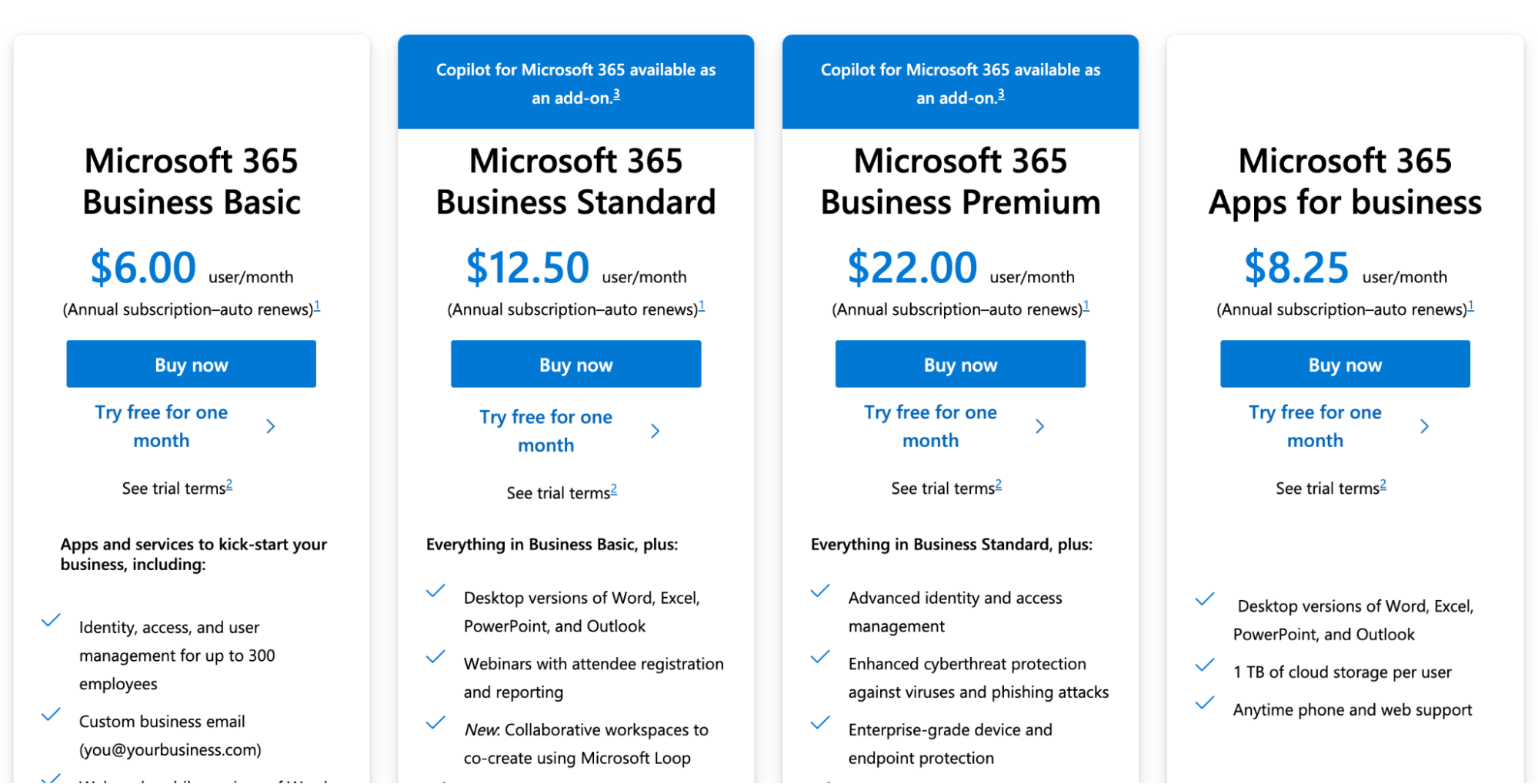
Numbers Pricing
Like Excel is for Windows users, Numbers is for Apple users, making it a cost-effective option for those already invested in the Apple ecosystem. It’s a free, in-built Apple spreadsheet software.
What are Customers Saying?
Rows Reviews
“Excellent job, before beginning to use the Rows, I really love short introduction videos as a taste of getting started tutorial. And also asking the user's level of understanding about spreadsheets was a plus. It is easy to use and easy to share. Good visual design!” - Product Hunt.

“I've been using Rows for several years now and I can honestly say it's the best way to work with spreadsheets. 📊 So I'm excited to see the new 2.0 version launch on PH today! 🔥There are so many new features to explore, from the API to the chart embeds, and the GPT-3 integration is just mind-blowing.” - Product Hunt.
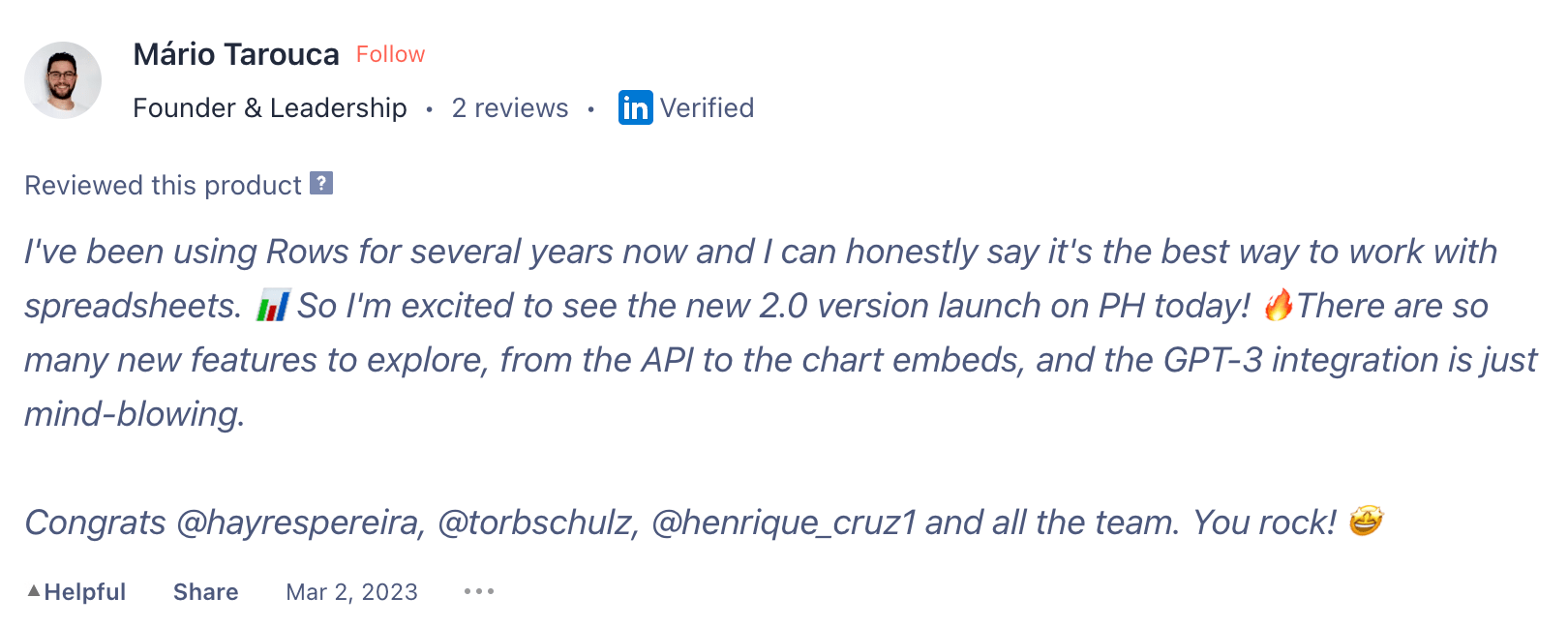

The spreadsheet for modern teams
Save hours on data import, surface insights by asking, and share beautiful, ready-to-use dashboards.
Get Started (free)Excel Reviews
Excel is an effective tool for complex calculations and data manipulation. However, this robustness accompanies complexity and comes with a steep learning curve.
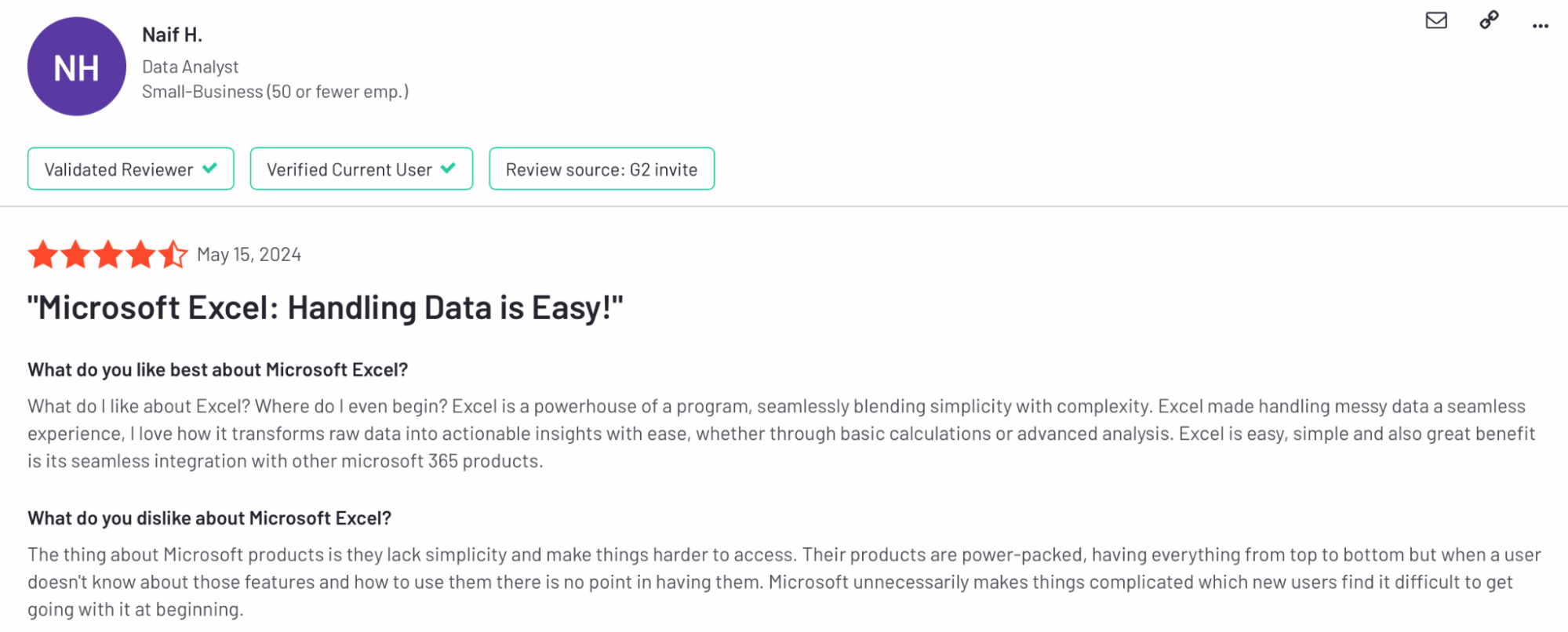
A learning curve is still manageable, but seeing users encounter a laggy interface when dealing with large datasets is something we couldn’t expect. Neither did this enterprise user 👇
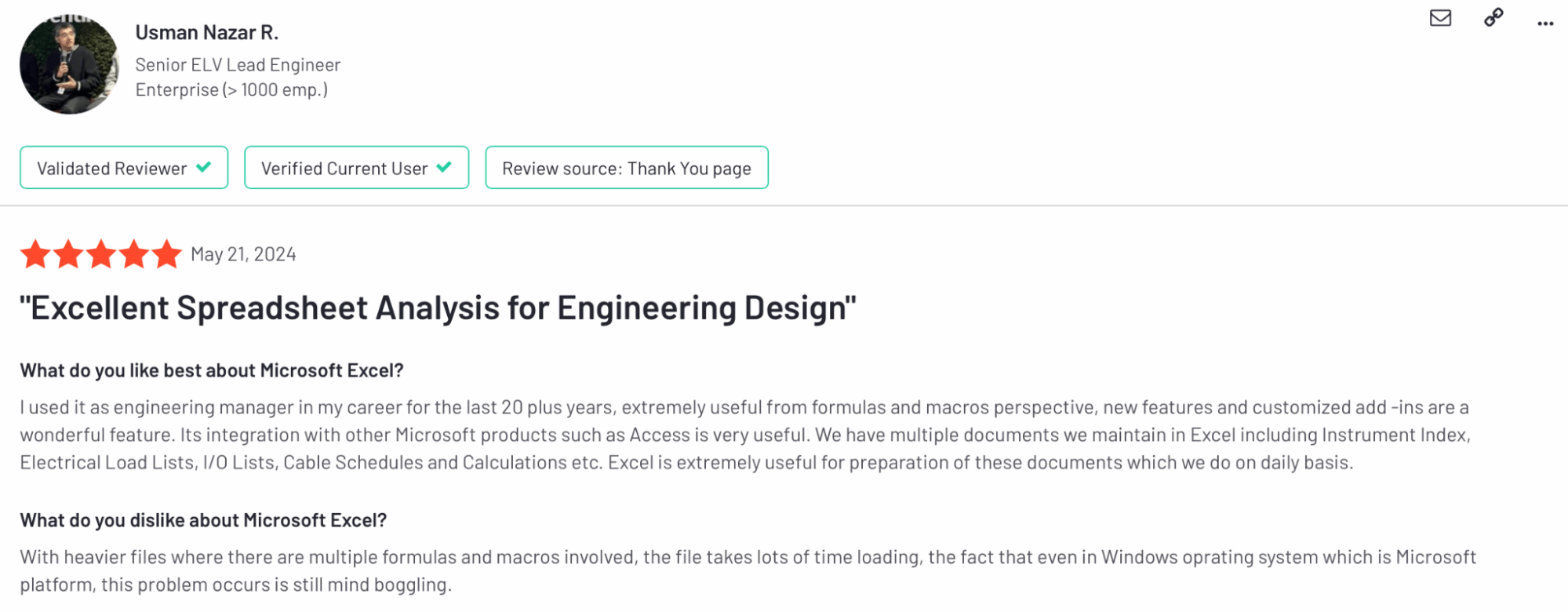
Numbers Reviews
According to a small business owner, Numbers offers a sleek, easy-to-use interface, making it their go-to tool for daily use cases. Meanwhile, they also highlight that Numbers lacks several features compared to Rows and Excel.
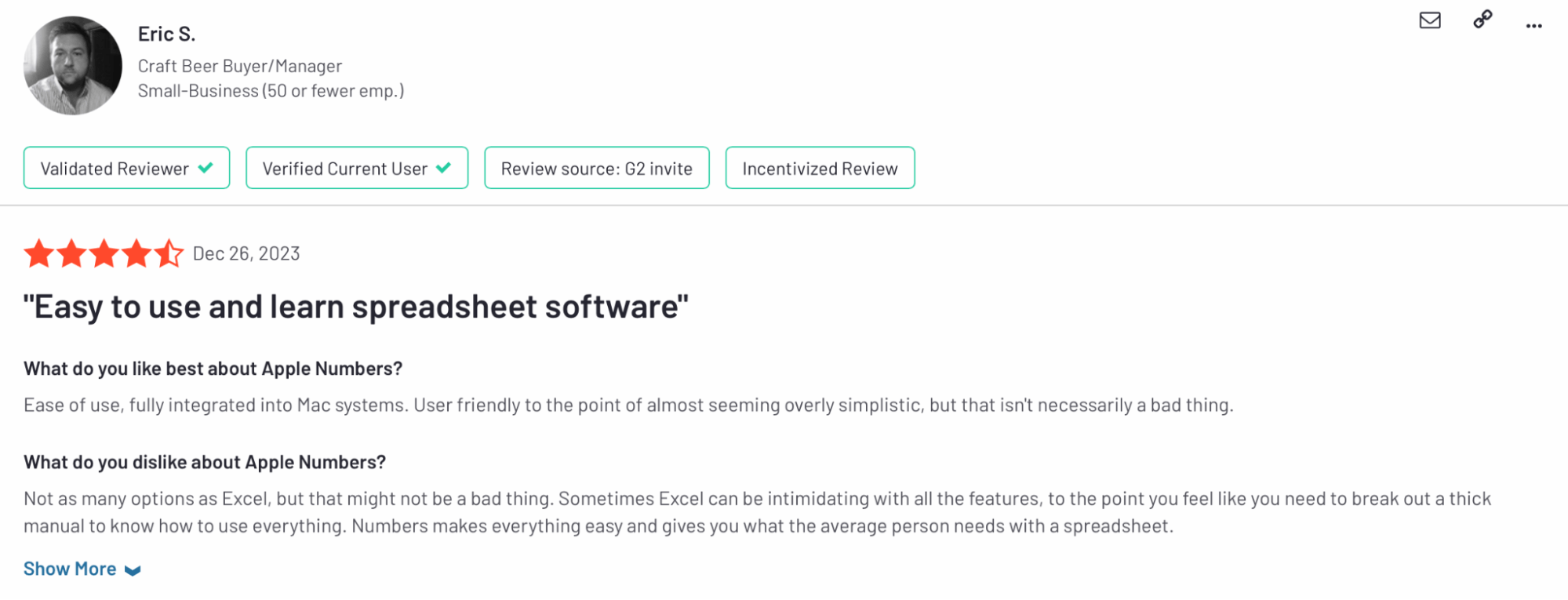
Another significant drawback is that Numbers is limited to iOS users. Thus, in a team environment, Excel remains the cohesive choice for data management. However, Numbers is still great for personal use.
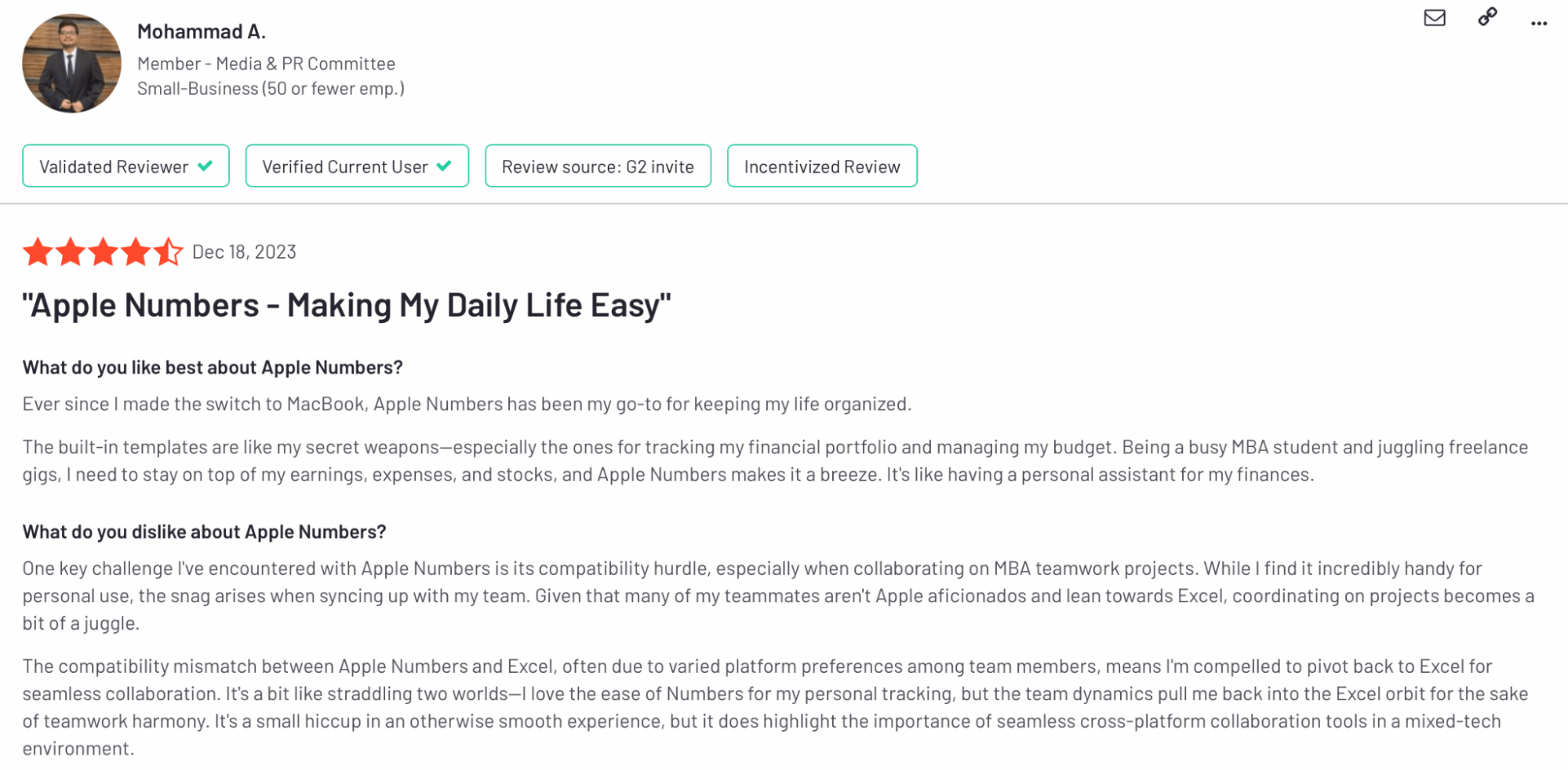
Wrapping Up
I hope this comparison guide will help you choose a spreadsheet software that suits your business the best.
Here’s a quick recap:
Rows’ AI capabilities, integrations, and unique features makes it one of the best spreadsheet software in the market. It can help you:
Make data analysis easier by leveraging AI, even for non-data-friendly users.
Build charts, graphs, and more elements that help you with data visualization.
Integrate with data warehouses, finance, marketing, and many more apps to import and export data.
Microsoft Excel is a good spreadsheet software for companies dealing with large datasets and complex calculations.
Numbers is built to carry out basic data analysis and visualization. It’s a great tool to collaborate with your team if everyone uses the Apple ecosystem.
If you or your team don’t have the time to try all three spreadsheet tools, go to Rows.com, import data, automate your report, and see if it's the right match!
Related Reading

